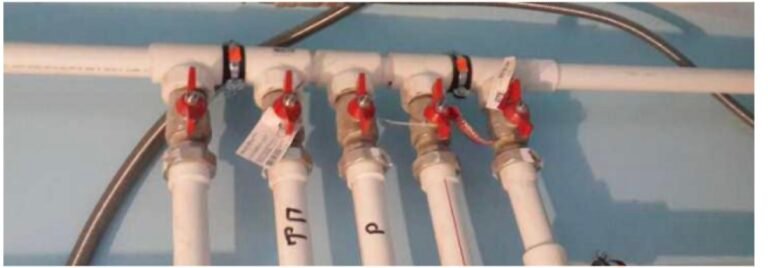Understanding the Pipe Relining Process: A Step-by-Step Guide
A well-functioning plumbing system is crucial for any home or business. Without it, everyday tasks can become a hassle and cause significant damage. Pipe relining has emerged as an innovative solution to traditional plumbing repair methods. Unlike the conventional approach, which often involves extensive digging and disruption, pipe relining provides a less invasive alternative. Understanding this process can equip property owners with the knowledge to make informed decisions when faced with plumbing issues such as leaks and root intrusions.
What is Pipe Relining?
Pipe relining is a modern technique designed to repair existing pipelines without the need for complete removal and replacement. It involves inserting a new, durable lining within the damaged pipe, essentially creating a new pipe inside the old one. This method typically employs materials like epoxy resin, which bonds to the pipe’s interior surface to create a resilient and long-lasting seal.
Being a non-invasive technique, pipe relining means there’s no need to dig up floors, lawns, or driveways. This aspect is particularly beneficial for those wanting to avoid the mess and expense associated with traditional plumbing repairs. Additionally, pipe relining boasts significant longevity and durability benefits, often extending the life of the pipes well beyond what traditional replacement methods might achieve.

When Should You Consider Pipe Relining?
Several signs indicate that pipe relining might be necessary. Frequent clogs, persistent leaks, or water backing up are all common symptoms of pipe deterioration. During routine maintenance, professionals can identify these issues before they require urgent attention. Choosing to reline rather than replace pipes can be more cost-effective, saving on both material and labour—factors that significantly impact the overall pipe relining costs.
Pipe relining is especially advantageous in older homes where infrastructure may not support extensive excavation, or the historical value might be at risk. Furthermore, when considering repair times, pipe relining holds the upper hand, offering a quicker resolution to plumbing problems without the traditional disruption.
Read also: How To Warm Up Frozen Pipes
The Pipe Relining Process: Step-by-Step
The process of pipe relining involves several carefully orchestrated steps:
1. Preliminary Inspection and Cleaning:
This first step involves inspecting the pipes using a high-definition camera to assess the extent of damage and suitability for relining. If the inspection reveals debris or obstructions, a thorough cleaning is performed to prepare the pipes.
2. Insertion of the Liner and Resin Mixture:
Once the pipes are clean, a liner, soaked in an epoxy resin mixture, is inserted into the affected pipe. The liner is expanded using air pressure to match the pipe’s interior, ensuring a snug fit.
3. Curing Process:
The curing process solidifies the resin, forming a new pipe within the old one. This can occur through ambient conditions or by using hot water or steam to accelerate the curing time.
4. Final Inspection and Testing:
After curing, the relined pipe undergoes a final inspection using a camera to ensure everything is in place and functioning optimally. Testing for any leaks or imperfections guarantees the reliability of the relining.
Advantages of Pipe Relining Over Traditional Methods
One of the primary advantages of pipe relining is its minimal disruption. There’s no major excavation, which means less mess and a quick return to normalcy. This technique also offers environmental benefits, as it involves significantly reduced excavation and waste production compared to traditional methods.
In addition, pipe relining is often more time-efficient. Traditional pipe replacement can take days or even weeks, whereas relining often requires just a few hours, depending on the extent of the problem. Furthermore, by reinforcing the structural integrity of existing pipes, relining prolongs their usability and enhances overall system reliability.
Read also: Annual Home Maintenance Checklist
Common Misconceptions About Pipe Relining
Several misconceptions surround the pipe relining process. A common belief is that relining is merely a temporary fix. In truth, properly relined pipes can last several decades, providing a permanent solution to many plumbing problems.
Another misconception is that relining is more expensive than traditional options. However, when considering long-term savings from reduced labour and material costs—as well as the avoidance of extensive excavation—relining can be more economical. Concerns about the durability and safety of relined pipes are often unfounded, as the materials used are highly resistant to corrosion and damage.
Some homeowners worry about the compatibility of pipe relining with various pipe materials and diameters, but the process is adaptable to a wide range of situations. Professional assessment ensures that pipe relining is suitable for the specific needs of any plumbing system.
Read also: Hydro Jetting for Drain Cleaning
Conclusion
Understanding the pipe relining process can be immensely beneficial for anyone considering pipe repairs. Its non-invasive approach and long-term advantages make it a compelling option over the conventional dig-and-replace methods. Consulting with professionals makes sense if plumbing issues arise, as they can offer expert advice on whether relining is the best solution. Being informed about how this innovative process works enables property owners to make decisions that align with their needs and budgets. For further exploration into this modern plumbing solution, contacting local experts or resources can provide detailed insights tailored to individual circumstances.



